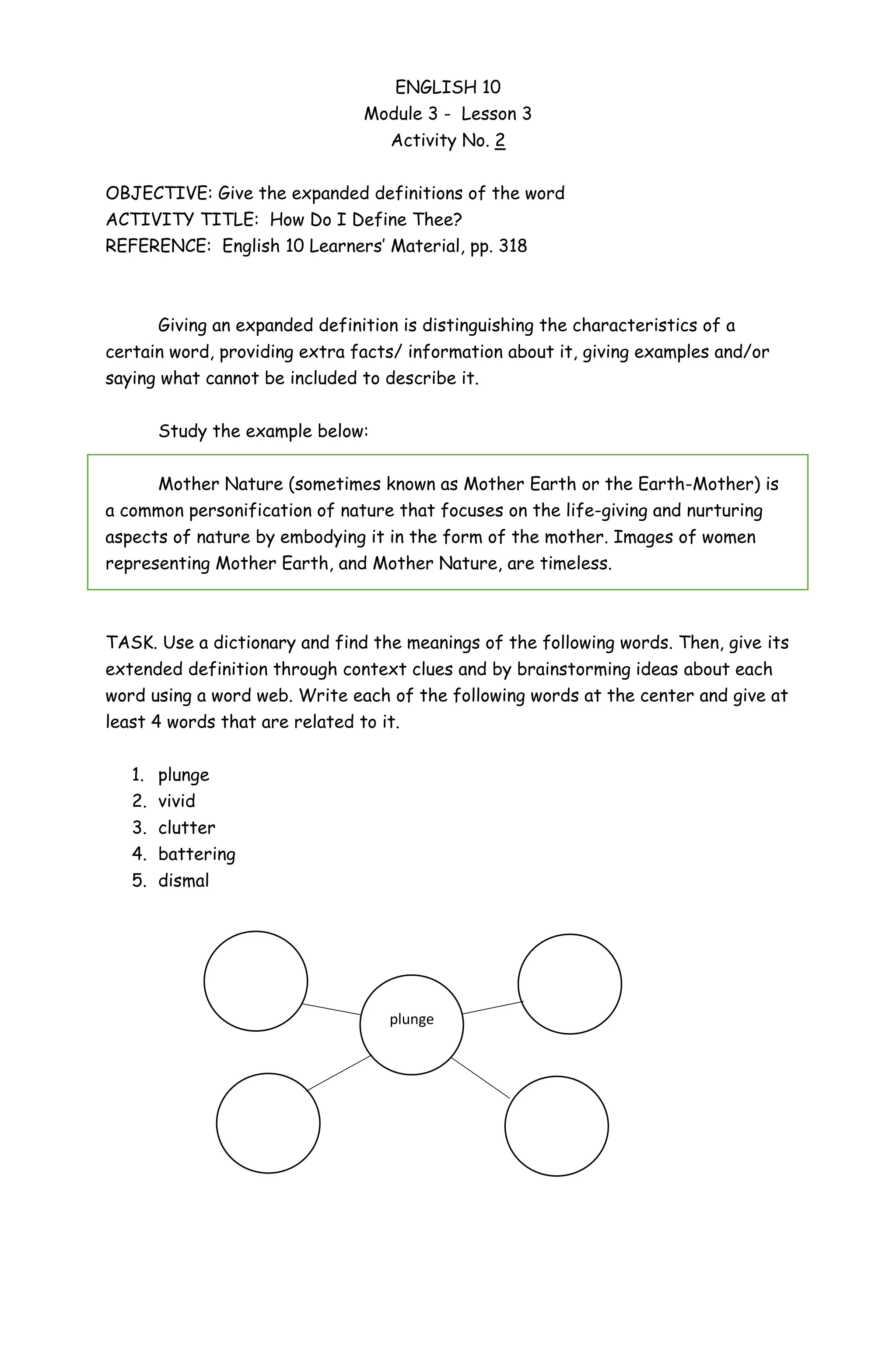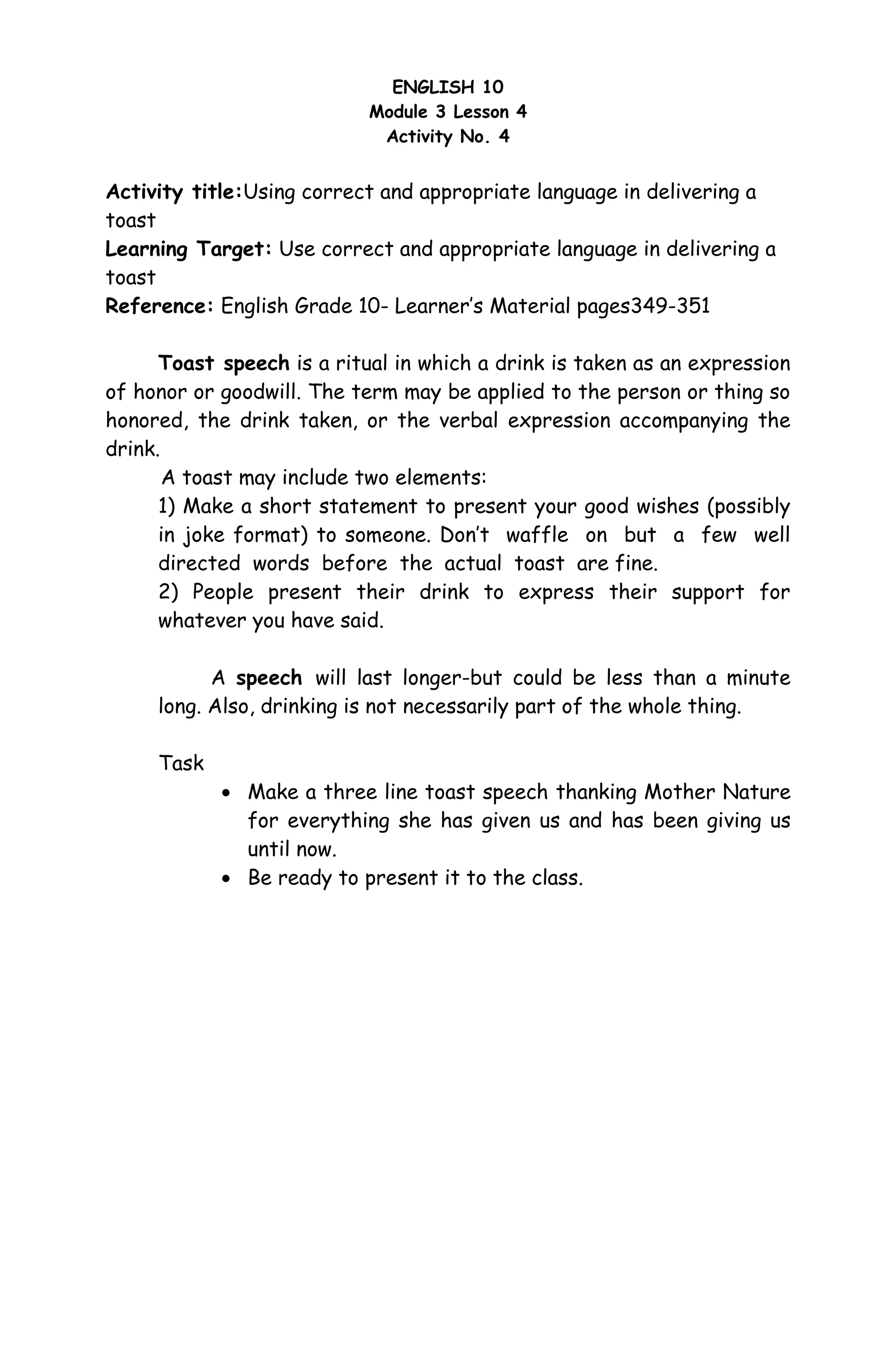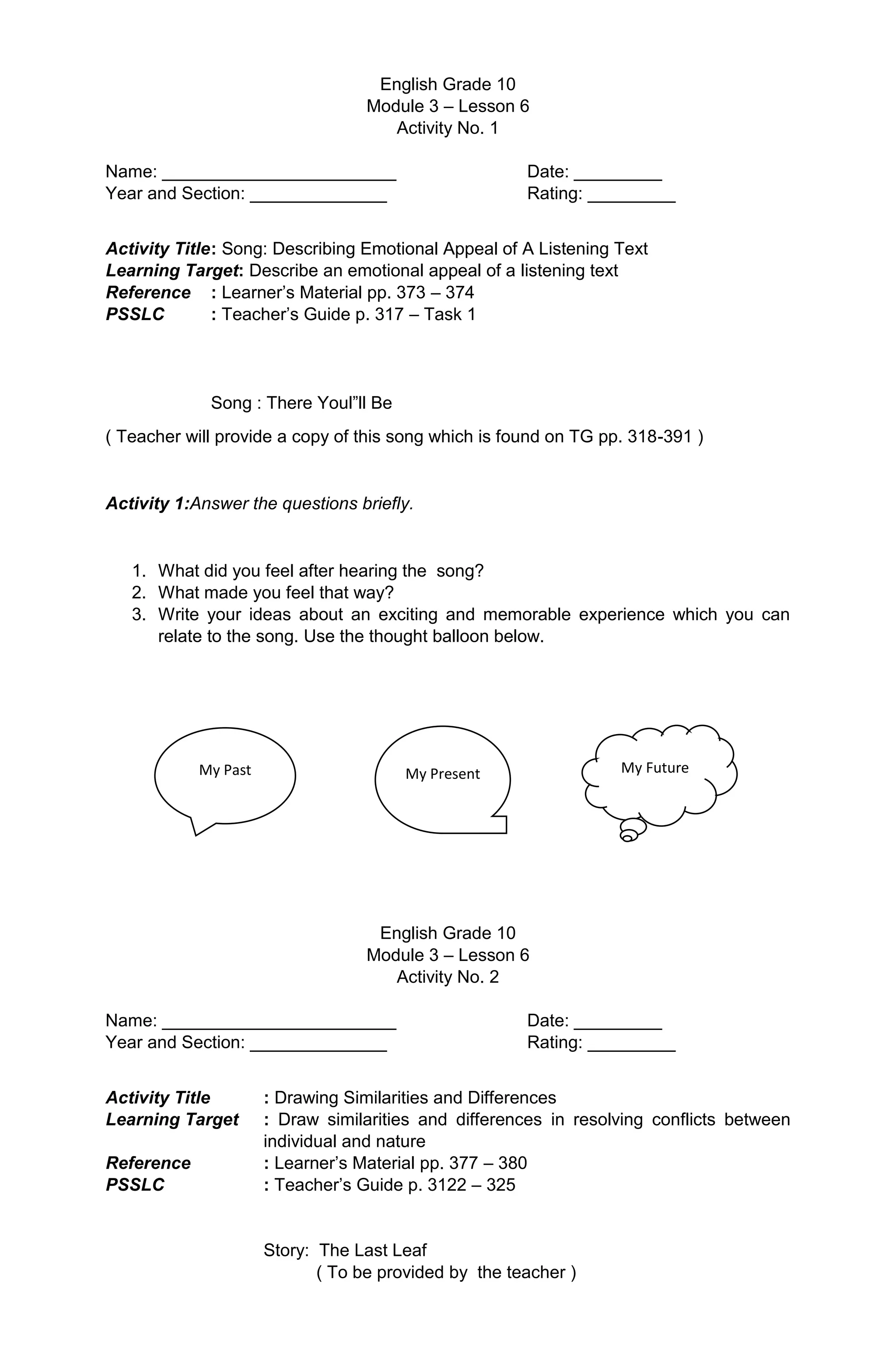This document contains details of 5 English lessons for Module 3. Lesson 1 includes activities on identifying sensory images in a song, analyzing a short story, identifying pronoun cases, performing a eulogy, and discussing Mother Nature. Lesson 2 covers distinguishing important points, analyzing a story's tone and purpose, critiquing a selection using pronouns, and writing a speech. Lesson 3 objectives are pointing out nature's feminine side, defining words, explaining how elements build a poem's theme. The activities provide guidance, references, and tasks to help students meet the learning targets.



























